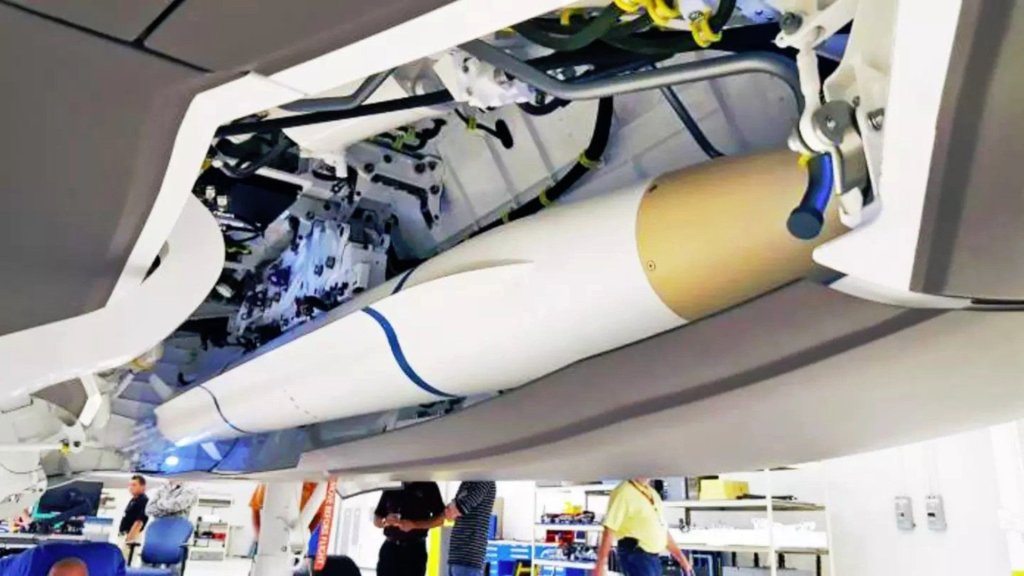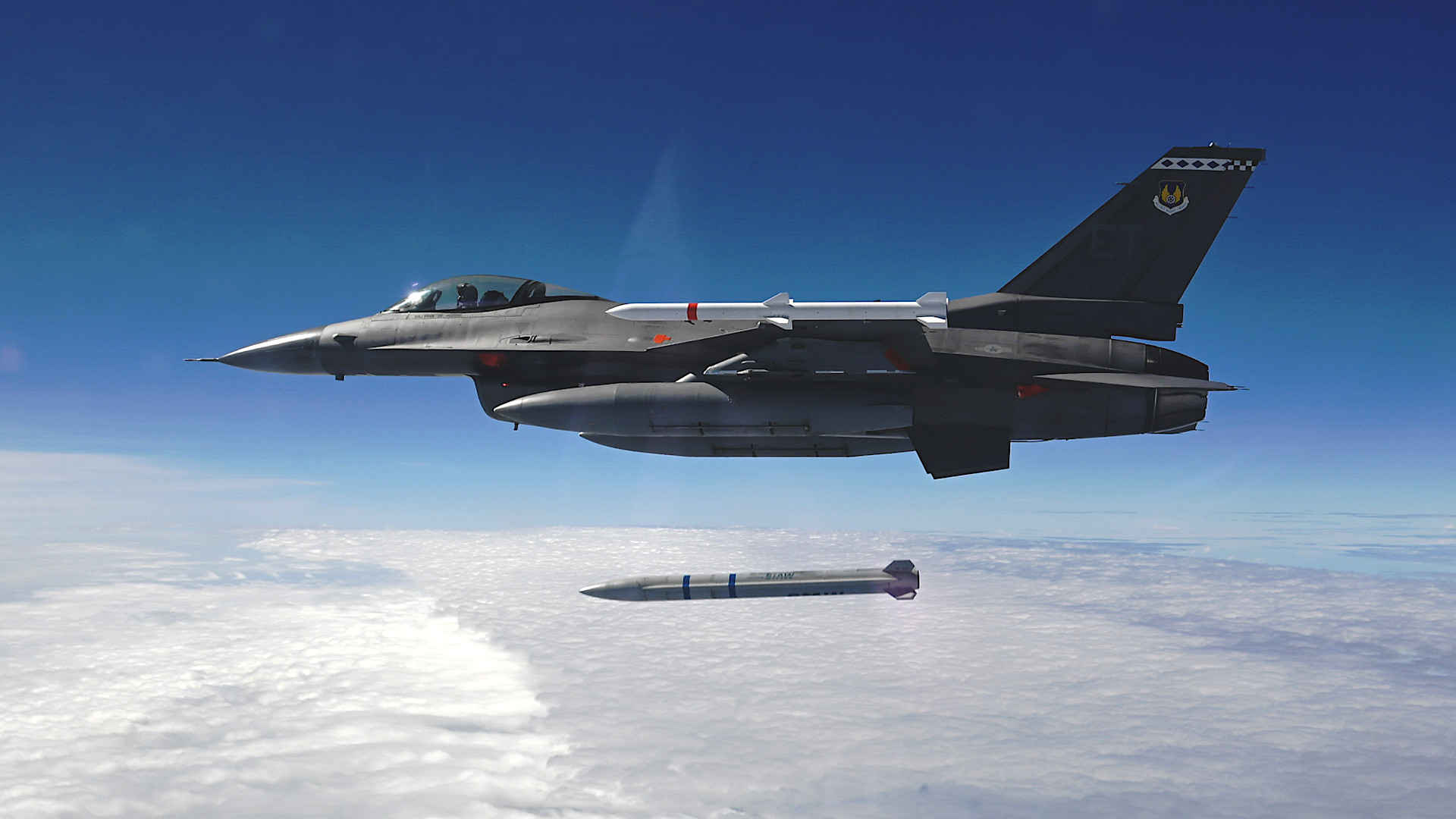A U.S. Air Force F-16C Viper has conducted the first test release of a Stand-in Attack Weapon (SiAW) missile. The service has said it expects the F-35A Joint Strike Fighter to be the first operational launch platform for the SiAW, which is being developed to provide a high-speed strike capability against a variety of time-sensitive ground targets.
The Air Force put out a picture of the F-16C from the 40th Flight Test Squadron releasing the SiAW test missile, seen below, over a range in the Gulf of Mexico earlier today. The test flight was staged from Eglin Air Force Base in Florida, but it is unclear when exactly it occurred. Prime contractor Northrop Grumman announced the delivery of the first SiAW test article last month, but it is not clear if that was the missile dropped in this test or how many others have been delivered since. The missile is derived from the AGM-88G Advanced Anti-Radiation Guided Missile-Extended Range (AARGM-ER), which has already been in flight testing for years now.

“The test missile used, called a jettison test vehicle, contained no rocket motor or internal electronics. The JTV is a tool used specifically to determine whether the weapon safely separates from the aircraft upon commanded release,” according to an official Air Force release. “The goal of the test was to prove the new weapon could separate from an aircraft successfully, a major milestone, so further testing can begin.”
“Test conductors planned and controlled the mission out of the Eglin Central Control Facility,” the release adds. “Engineers monitored the separation and will conduct post-flight analysis soon.”
Separation testing is an important part of the development of any new air-launched munition. Not all stores act the same way after release, and this can be further impacted by what type of aircraft they are released from. The historical video montage below highlights the very serious potential risks that these tests are designed to help mitigate.

For SiAW, gathering data on how the missile separates from any pylon would be a useful starting place toward working up to future tests. The picture of the F-16 dropping the test article also gives a good sense of just how big the weapon is overall.

As already noted, the expectation is that the F-35A will be the first operational launch platform for the missile and that those jets will be able to carry them in their internal bays, which will require additional separation testing. An internal carriage will allow the A model Joint Strike Fighters to employ the weapons while operating in their most stealthy mode.

The Air Force has said the SiAW could also arm “future stealth aircraft” in addition to the F-35A, which might include the B-21 Raider stealth bomber and uncrewed types.
Regardless of the launch platform, “the Stand-in Attack Weapon (SiAW) system will provide capability to strike rapidly re-locatable targets that create the Anti-Access/Area Denial (A2/AD) environment,” the Air Force said in its 2025 Fiscal Year budget request, released back in March. “SiAW targets include Theater Ballistic Missile Launchers, Land Attack and Anti-Ship Cruise Missile Launchers, Jammers, Anti-Satellite Systems, and Integrated Air Defense Systems.”
This is a broader array of targets than the ones the AGM-88G is primarily intended to defeat. The AARGM-ER is optimized for supporting the suppression and destruction of enemy air defenses (SEAD/DEAD) mission sets. However, that missile will still have an inherent secondary general strike against targets on land and at sea, as you can read more about here.

It is also possible that the SiAW could find its way onto other aircraft within the service, as well as with other U.S. and foreign operators. Sized for the A version of the F-35, the missile would also be able to fit inside the bays on U.S. Navy and U.S. Marine F-35Cs, though not in the smaller ones on F-35Bs that the Marines and others fly. All three types could be able to carry the missiles externally, too.
Depending on the SiAW’s maximum range, it may also be an option for non-stealthy platforms like the F-16, especially when leveraging third-party targeting data to help stay away from threats. Those aircraft could also employ the weapon against air defense assets or other high-value targets of opportunity that might suddenly emerge closer by.
Currently, the Air Force’s stated goal is to reach initial operational capability with SiAW, at least on F-35A by 2026. Flight testing of the missile is now fully underway.
Contact the author: joe@twz.com
